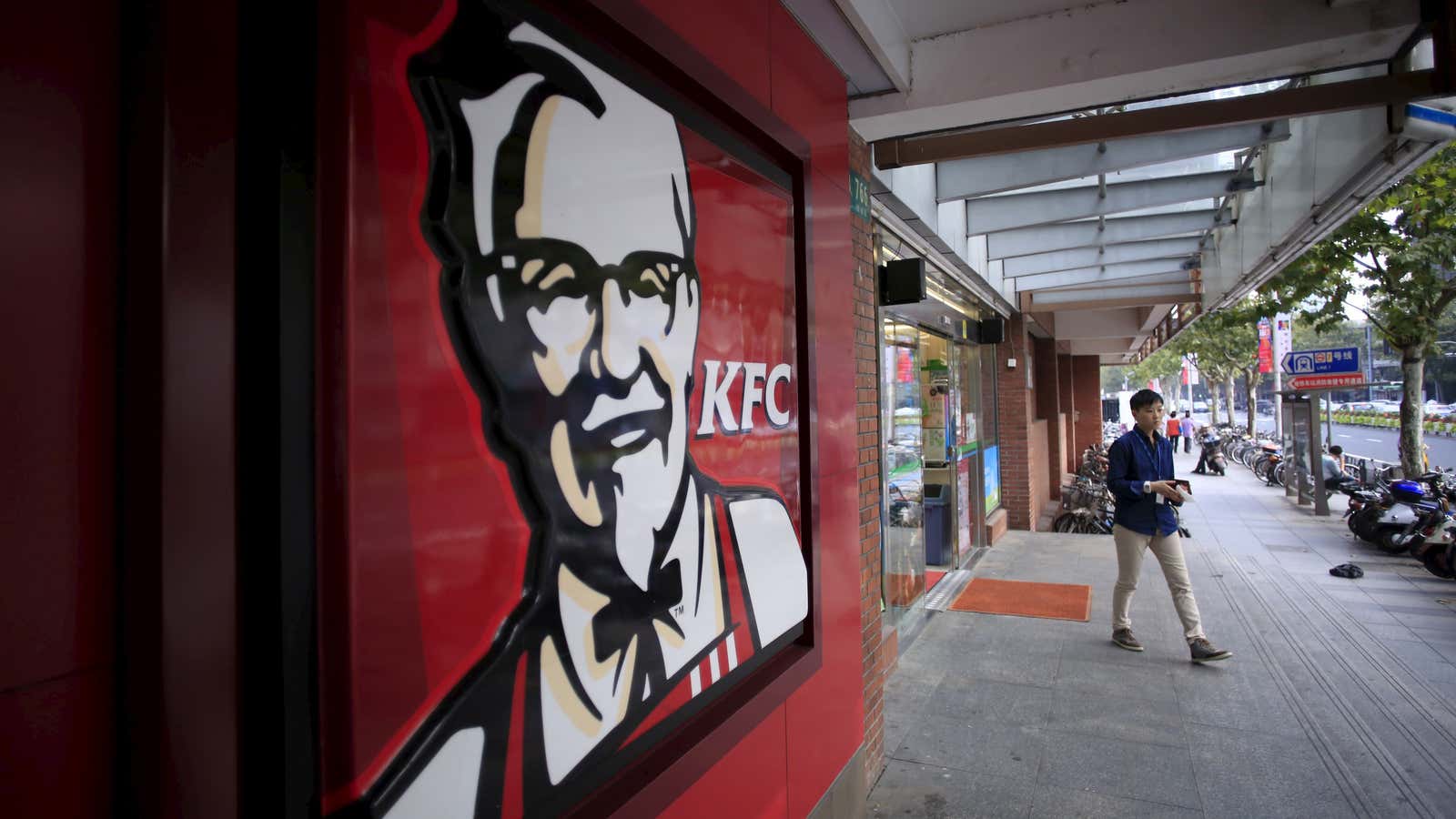China has been a very sore spot for KFC since the third quarter of 2014, when sales plunged 14% due to a tainted meat scare.
But earlier this week, the fast-food chicken chain had a sliver of good news to share: same-store sales in China grew 6% in the latest quarter. They fell 8% at sister chain Pizza Hut there, but overall the results were still positive enough to boost parent company Yum Brand’s China division by 2%.
In October, Yum announced plans to spin off its China division as a separate publicly traded company. The spinoff is designed to insulate Yum from the economic turbulence that’s plagued its China brand. The decision was also announced five days after an activist investor who had suggested a Yum China separation joined the company’s board. About three quarters of Yum’s China profits came from KFC in 2015, and one quarter from Pizza Hut, according to Yum.
At an investor conference in December, executives said Yum’s China units, which currently number 7,000, could grow threefold. ”The investment thesis is high growth, pure play, on what we believe is the growth in the China consuming class,” said Greg Creed, Yum’s CEO. Micky Pant, CEO of Yum’s China division, called KFC “an integral part of life.”
Even with the latest positive results, though, there are some big catches to those rosy statements.
First, Yum’s recent history in China is checkered at best. When the tainted meat scandal hit in 2014, Yum had just recovered from another steep dive tied to Avian flu and and problems with one of its chicken suppliers. For a long time, KFC benefitted in China from the perception that its US-branded restaurants were cleaner and safer than local options. Repeated food safety incidents have eroded that advantage.
Second, it’s unclear how good Yum’s outlook with Chinese consumers actually is. Yum’s share of fast food in China fell 1.6 percentage points from 2012 to 2014, according to data from Euromonitor, even as the market itself grew by about $19 billion. McDonald’s, the second-biggest fast-food brand in China after Yum, also lost share from 2013 to 2014. One theory for that decline is China’s aging population—“a demographic that doesn’t tend to buy a lot of chicken nuggets,” as Bloomberg View’s Adam Minter put it in October.
Third and finally, China is attempting to transition from a manufacturing-driven economy to a consumer-based one, and it’s been rocky, to put it kindly. Markets are perilously low after a new bout of turbulence that began last week. When Yum’s same-store sales in China fell 10% over the summer, the company chalked it up to “tremendous unprecedented economic events.” But such events are becoming all too common in China.
